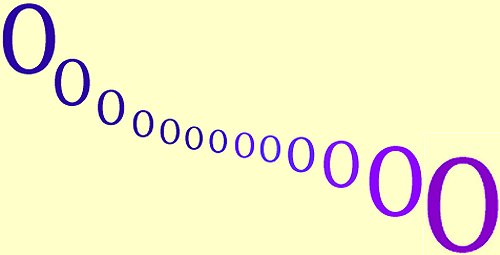Zero
Today, we seek nothing. The University of Houston's College of Engineering presents this series about the machines that make our civilization run, and the people whose ingenuity created them.
In his book, The Nothing That Is, Robert Kaplan tells the history of zero. It's tricky because we have to simultaneously see zero as a symbol, a mathematical concept, and a metaphor. How to capture all those contradictory roles?
Even today, it might seem confusing that the symbol for nothing is what we use to make numbers very large. "I'll give you two hundred dollars for your horse," says farmer A. "Add a zero," says farmer B, "then we can talk business."
So Kaplan deals with very-large numbers as well as with the absence of number. When Archimedes wanted to show how large numbers might get, he began with a known Greek word, myriad. Myriad meant ten thousand: a number that no one yet had any way to write out.
Archimedes said, imagine a myriad grains of sand making up a pile the size of a seed. Now imagine a pile of seeds the size of your finger. A myriad finger-widths is a tenth of mile. How many of those would make up the diameter of Earth; how many Earths, a universe? Archimedes arrives at a number of grains of sand equal to a one followed by sixty-three zeros. But, without a zero, he can only recite this tortuous assembly of grains of sand.
For a zero to take its place among numbers, it had to sneak up on people. By six hundred AD, the mathematician Brahmagupta in India was clearly asserting that any number subtracted from itself was zero. He also struggled with adding, multiplying — even dividing by zero. At the same time, Mayas in the western hemisphere had many symbols for zero. They even had a god of zero — a god of death whom they used in some their more ghastly rituals.
India took up the use of a dot to signify zero. The concept eventually seeped out of India. It seems to've traveled the Silk Road to the Arab world, in the tenth century. There it mutated from a dot into a circle. And the Arabs learned how to make it a functional part of arithmetic and algebra.
But the transfer of ideas between Europe and the Middle East was about to founder on the Crusades. And, by the twelfth century, William of Malmsbury was still writing about algebra as dangerous Saracen magic. Zero wouldn't get full use in Europe until the fifteenth century. Even then it kept setting traps for us.
Divide zero by itself and you can get any number. Multiply it by anything and it grows no larger. Kaplan offers a tongue-in-cheek riddle: If a total of four people occupy a room and seven people leave, how many must enter before the room is empty? (The answer, of course, is three.)
He ends with octopuses: If he says all octopuses have nine tentacles, we need produce only one with eight tentacles to disprove him. But if he says every octopus in his room has nine tentacles we can't disprove him, since the number of octopuses in his room is zero.
Zero does indeed seem to toy with us. Yet without zero, it is mathematics itself that would be nothing.
I'm John Lienhard, at the University of Houston, where we're interested in the way inventive minds work.
(Theme music)
R. Kaplan, The Nothing That Is: A Natural History of Zero. New York: Oxford University Press, 1999.
I am grateful to Lewis Wheeler, UH Mechanical Engineering Dept., for lending me the Kaplan book and for his counsel.
